Brain morphometry in older adults with and without dementia using extremely rapid structural scans
- PMID: 37201641
- PMCID: PMC10330834
- DOI: 10.1016/j.neuroimage.2023.120173
Brain morphometry in older adults with and without dementia using extremely rapid structural scans
Abstract
T1-weighted structural MRI is widely used to measure brain morphometry (e.g., cortical thickness and subcortical volumes). Accelerated scans as fast as one minute or less are now available but it is unclear if they are adequate for quantitative morphometry. Here we compared the measurement properties of a widely adopted 1.0 mm resolution scan from the Alzheimer's Disease Neuroimaging Initiative (ADNI = 5'12'') with two variants of highly accelerated 1.0 mm scans (compressed-sensing, CSx6 = 1'12''; and wave-controlled aliasing in parallel imaging, WAVEx9 = 1'09'') in a test-retest study of 37 older adults aged 54 to 86 (including 19 individuals diagnosed with a neurodegenerative dementia). Rapid scans produced highly reliable morphometric measures that largely matched the quality of morphometrics derived from the ADNI scan. Regions of lower reliability and relative divergence between ADNI and rapid scan alternatives tended to occur in midline regions and regions with susceptibility-induced artifacts. Critically, the rapid scans yielded morphometric measures similar to the ADNI scan in regions of high atrophy. The results converge to suggest that, for many current uses, extremely rapid scans can replace longer scans. As a final test, we explored the possibility of a 0'49'' 1.2 mm CSx6 structural scan, which also showed promise. Rapid structural scans may benefit MRI studies by shortening the scan session and reducing cost, minimizing opportunity for movement, creating room for additional scan sequences, and allowing for the repetition of structural scans to increase precision of the estimates.
Keywords: ADNI; Aging; Alzheimer's disease; Frontotemporal lobar degeneration; Hippocampus; MRI.
Copyright © 2023. Published by Elsevier Inc.
Conflict of interest statement
Declaration of Competing Interest Tom Hilbert and Tobias Kober are employed by Siemens Healthineers International AG, Switzerland. The authors have no other conflicts of interest to report.
Figures



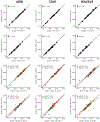
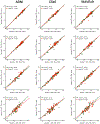

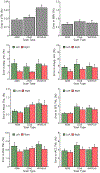


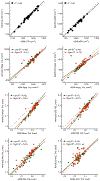

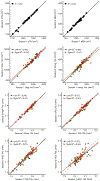
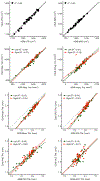
Similar articles
-
Design and validation of the ADNI MR protocol.Alzheimers Dement. 2024 Sep;20(9):6615-6621. doi: 10.1002/alz.14162. Epub 2024 Aug 8. Alzheimers Dement. 2024. PMID: 39115941 Free PMC article. Review.
-
Reliability of structural MRI measurements: The effects of scan session, head tilt, inter-scan interval, acquisition sequence, FreeSurfer version and processing stream.Neuroimage. 2022 Feb 1;246:118751. doi: 10.1016/j.neuroimage.2021.118751. Epub 2021 Nov 27. Neuroimage. 2022. PMID: 34848299 Free PMC article.
-
Effects of changing from non-accelerated to accelerated MRI for follow-up in brain atrophy measurement.Neuroimage. 2015 Feb 15;107:46-53. doi: 10.1016/j.neuroimage.2014.11.049. Epub 2014 Dec 4. Neuroimage. 2015. PMID: 25481794 Free PMC article.
-
Diagnosis and prognosis of Alzheimer's disease using brain morphometry and white matter connectomes.Neuroimage Clin. 2019;23:101859. doi: 10.1016/j.nicl.2019.101859. Epub 2019 May 13. Neuroimage Clin. 2019. PMID: 31150957 Free PMC article.
-
Structural magnetic resonance imaging for the early diagnosis of dementia due to Alzheimer's disease in people with mild cognitive impairment.Cochrane Database Syst Rev. 2020 Mar 2;3(3):CD009628. doi: 10.1002/14651858.CD009628.pub2. Cochrane Database Syst Rev. 2020. PMID: 32119112 Free PMC article.
Cited by
-
Precision brain morphometry using cluster scanning.Imaging Neurosci (Camb). 2024 May 20;2:imag-2-00175. doi: 10.1162/imag_a_00175. eCollection 2024. Imaging Neurosci (Camb). 2024. PMID: 40800474 Free PMC article.
-
Detecting short-interval longitudinal cortical atrophy in neurodegenerative dementias via cluster scanning: A proof of concept.medRxiv [Preprint]. 2025 Mar 17:2025.03.14.25323769. doi: 10.1101/2025.03.14.25323769. medRxiv. 2025. PMID: 40166536 Free PMC article. Preprint.
-
Reliability of structural brain change in cognitively healthy adult samples.Imaging Neurosci (Camb). 2025 Apr 22;3:imag_a_00547. doi: 10.1162/imag_a_00547. eCollection 2025. Imaging Neurosci (Camb). 2025. PMID: 40800869 Free PMC article.
-
Design and validation of the ADNI MR protocol.Alzheimers Dement. 2024 Sep;20(9):6615-6621. doi: 10.1002/alz.14162. Epub 2024 Aug 8. Alzheimers Dement. 2024. PMID: 39115941 Free PMC article. Review.
-
Quantitative evaluation of Scout Accelerated Motion Estimation and Reduction (SAMER) MPRAGE for morphometric analysis of brain tissue in patients undergoing evaluation for memory loss.Neuroimage. 2024 Oct 15;300:120865. doi: 10.1016/j.neuroimage.2024.120865. Epub 2024 Sep 28. Neuroimage. 2024. PMID: 39349147 Free PMC article.
References
-
- Baum GL, Flournoy JC, Glasser MF, Harms MP, Mair P, Sanders AFP, Barch DM, Buckner RL, Bookheimer S, Dapretto M, Smith S, Thomas KM, Yacoub E, Van Essen DC, Somerville LH, 2022. Graded variation in T1w/T2w ratio during adolescence: measurement, caveats, and implications for development of cortical myelin. J. Neurosci 42, 5681–5694. doi:10.1523/JNEUROSCI.2380-21.2022. - DOI - PMC - PubMed
-
- Bejanin A, Tammewar G, Marx G, Cobigo Y, Iaccarino L, Kornak J, Staffaroni AM, Dickerson BC, Boeve BF, Knopman DS, Gorno-Tempini M, Miller BL, Jagust WJ, Boxer AL, Rosen HJ, Rabinovici GD, 2020. Longitudinal structural and metabolic changes in frontotemporal dementia. Neurology 95, e140–e154. doi:10.1212/WNL.0000000000009760. - DOI - PMC - PubMed
Publication types
MeSH terms
Grants and funding
LinkOut - more resources
Full Text Sources
Medical
Research Materials

